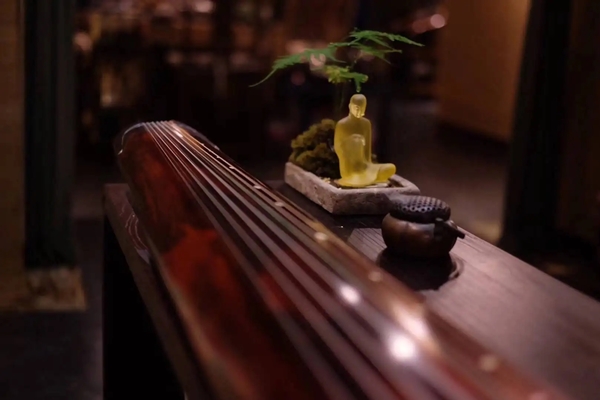Tips for learning guqin
What should I pay attention to when learning guqin? Many friends will find it difficult to learn Guqin. Here are some tips for learning Guqin.

Tip 1: Count the "beat notes" to identify the difference
When two sounds with a small difference and very close to each other are produced at the same time, a mixed sound of alternating strength and weakness of "woo-oh-woo-oh-..." can be heard, which is called "beat note". How many Hertz (Hz, unit of frequency) differ between the frequencies of two tones, then how many "beats" can be heard per second. When you hear a tight "woooooooooooo...", it means that the two tones are slightly different; when you hear a very familiar "woo-oh-woo-oh-..." , indicating that the two tones are very close, and can be considered to be basically calibrated without affecting the performance; when the "beat note" is no longer audible, it indicates that the calibration has been completed.
Tip 2: "Tuina" to distinguish between the high and the low
Many friends have such experience in the tuning process. When two tones are very close, although they can hear their differences, they can't tell which one is higher and which is lower. At this time, after the two notes are played, quickly use your right finger to push the teeny head to the left or right (the teeny head can be moved very little, but the change in the string's tightness is enough to make the pitch changes), and listen to the change in "beat note". If you push the head to the left, the "beat note" slows down or disappears, indicating that the string is too high (string is tight), and the string should be loosened slightly; on the contrary, if the "beat note" becomes more rapid, it indicates that the string note If the string is too low (the string is loose), the string should be tightened slightly. In the same way, if you push the teeny head to the right, the "beat note" becomes slower, indicating that the string is low (loose) and should be tight; if the "beat" becomes sharper, it indicates that the string is high (tight) and should be loose.
Tip 3: "Overkill" anti-running sound
The last thing you want to happen in the performance is that the pre-tuned piano "runs out of tune", like a wild horse running away - suddenly slackening, or like a spring bug - twisting and twisting. Generally speaking, there are two main reasons for this phenomenon, one is the looseness of the piano, and the other is the unbalanced tension of the teenage head. Carefully observe the strings, velvet, qin and the Yueshan part of the qin head, and it is not difficult to find that the strings are in close contact with the body at the edge of the Yueshan. long (pictured), and its tightness determines the pitch of the string. On the outer (right) side of the edge of Yueshan, the teeny head and velvet (also known as the velvet button, that is, the silk rope that ties the strings), although they belong to the "invalid string length", they restrain the tightness of the strings. Under normal circumstances, the tightness of the two parts should be the same, the teeny head will not slide left and right, and the string sound is stable. When the violin shaft is rotated during tuning, the tightness of the velvet part changes, which is then transmitted to the effective chord length of the string, making it loose or tight. However, due to the close contact between the string and Yueshan, the friction force is large, and the sliding block of the teeny head is easy to occur, so that the tightness of the left and right parts is not completely consistent. At this time, the tuned piano is actually in an "unstable state". As the performance progresses, affected by the vibration of the piano body and the chords, the teeny head will continue to move slightly towards the tighter side, so the sound of the strings will be " run" off. In response to this situation, the best way is to "overcorrect", that is, after rotating the reeds for tuning, gently push the teeny head with your fingers (tighten the strings, push to the right, and loosen the strings to the left), And press the string down once, so that the string and the teeny head can overcome the Yueshan block and slide to the position of tightness and balance, which can effectively prevent the running tone.
 渝公网安备 50010702504639号
渝公网安备 50010702504639号